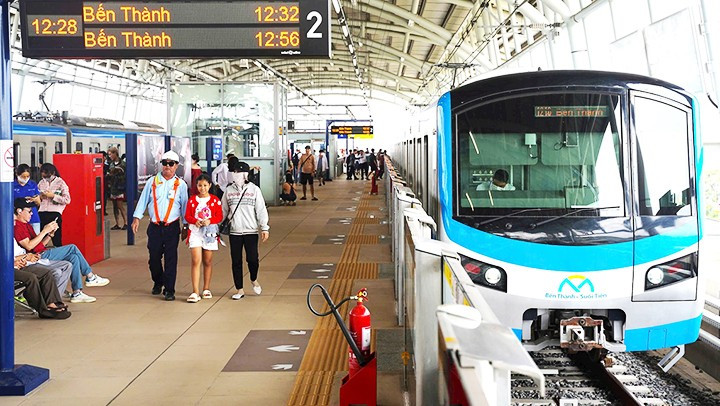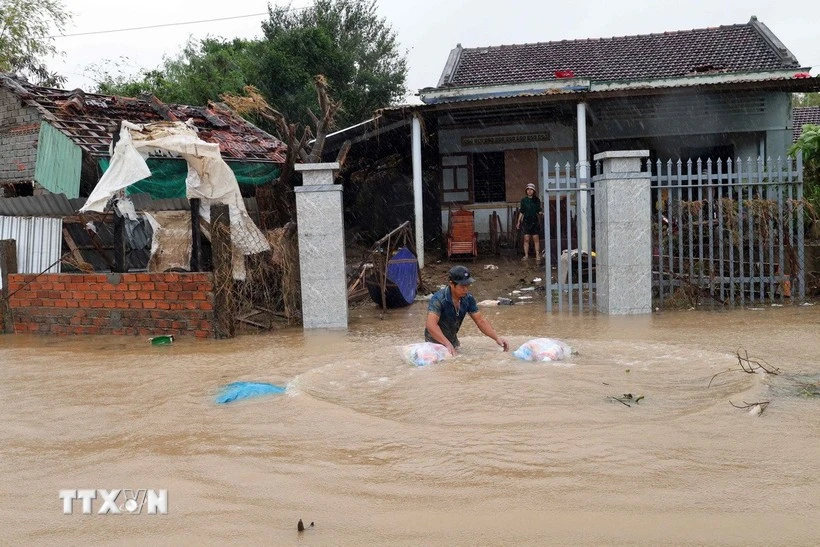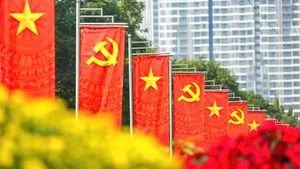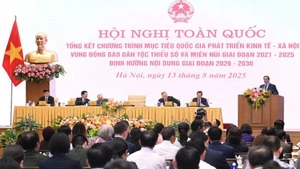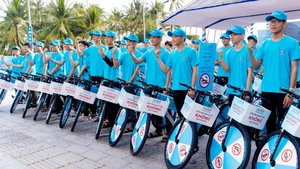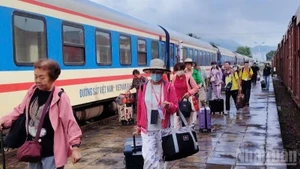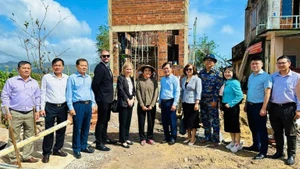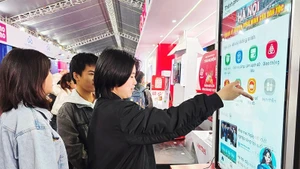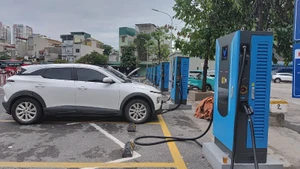A convenient mode of transport
It was 6 am and Ben Thanh Station was already packed with passengers boarding and alighting from metro trains; these were passengers using the metro on its third day of commercial operation.
Hung Chan Long from District 5 shared: “I used to travel to work in Thu Duc by motorbike, but now the metro has greatly helped with my commute. I walk for about 15 minutes from my home to the station, then take the train from Ben Thanh to Thao Dien, and walk for another 10 minutes to my company — it’s quick, safe, and riding on this modern train feels no different from commuting in developed countries.”
Sitting on the clean, air-conditioned train to school, Lai Thi Mong Van, a third-year student at Ho Chi Minh City University of Technology, shared her excitement: “I get off at Van Thanh Station and immediately catch an electric bus that quickly takes me straight to school. What’s interesting is that the train travels along one of the most beautiful routes, and sitting there observing the high-rise buildings along both sides of the track really makes you appreciate the city’s strong development.”
Sharing their joy, many passengers and residents travelling on the metro are delighted that they no longer have to depend on personal vehicles like motorbikes and cars, no longer have to breathe in dust and exhaust on the roads, and can avoid traffic jams during peak hours.
From Ben Thanh Station, most passengers are travelling from Districts 1, 3, and 4 to areas like Binh Thai, Thu Duc, High-tech Park and National University for work. Similarly, in the opposite direction, many people travel from stations in Thu Duc to the city centre for work. Additionally, many tourists returning via the New Eastern Bus Station also use the metro to travel into the city.
Le Minh Triet, Director of Ho Chi Minh City Urban Railway No. 1 — the operator of the line, reported that compared to the first day of official operation, the second and third days saw fewer passengers. The stations, especially Ben Thanh, are no longer overcrowded. However, the company still mobilised maximum staff and volunteers at stations to support and guide residents as they familiarise themselves with the system.
According to Triet, the current average is about 40,000 passengers per day, significantly exceeding the initially projected passenger numbers of around 27,000. Initially, the plan was to run 9 trains, but due to extremely high demand, an additional train was added. This demonstrates the strong appeal of Metro Line 1 and forecasts suggest numbers will continue to increase in the coming period.
A boost for tourism
The project’s total construction time spanned over 17 years with many difficulties and challenges. However, drawing from this experience, Ho Chi Minh City aims to build seven metro lines totalling 355 kilometres in the next ten years. Future metro lines are oriented toward increasing underground sections to reduce site clearance costs and effectively exploit underground spaces, combined with urban renovation.
Following Metro Line 1, the construction for Metro Line 2 (Ben Thanh-Tham Luong Line) is also being urgently implemented. To date, the project has completed 100% of the land clearance procedures. The project has constructed electrical, water supply, drainage, and signage components. Recently, the relocation and connection of the 110 kV underground high-voltage cable system serving the construction of Tao Dan Station has also been completed.
According to Ho Chi Minh City Vice Chairman Bui Xuan Cuong, in the next phase, the city will continue to focus on developing synchronised urban railway lines within the master plan according to the transit-oriented development (TOD) model. He hopes that city residents and tourists will actively support maximising the effectiveness of the urban railway line after its official operation. This aims to build Ho Chi Minh City into a smart, modern and sustainable metropolis in the future.
Nguyen Thi Anh Hoa, Director of the Ho Chi Minh City Department of Tourism, emphasised that the quick, time-saving, and cost-effective means of transport is ready to provide residents and tourists with a unique experience while exploring the city. The metro line connects the central and eastern areas of the city, bringing tourists closer to prominent attractions such as Ben Thanh Market, the Opera House, the City Hall, Nguyen Hue Pedestrian Street, Fine Arts Museum, and more.
Ho Chi Minh City Metro Line 1 will operate 200 train trips per day. The first train departs at 5 am and the last train departs at 10 pm. The interval between each trip is 8 minutes during peak hours and 12 minutes during off-peak hours. The travel time from Ben Thanh Station (District 1) to Suoi Tien Terminal (Thu Duc City) is 29 minutes.
